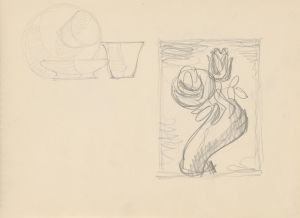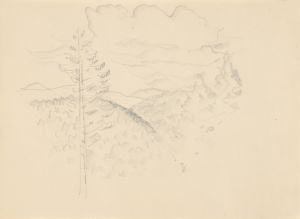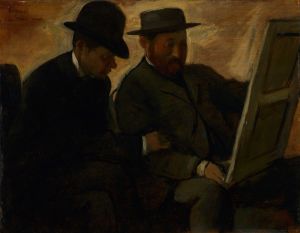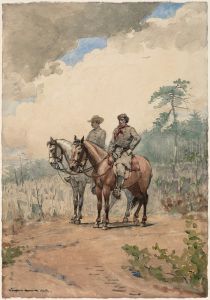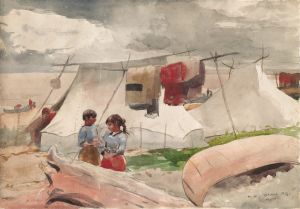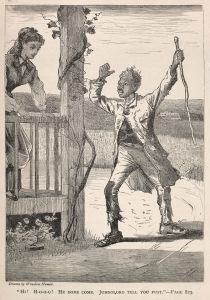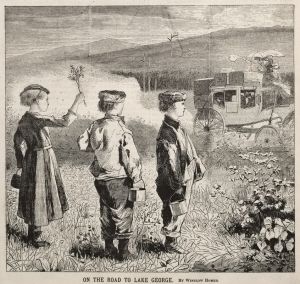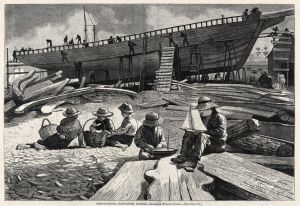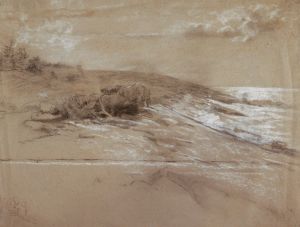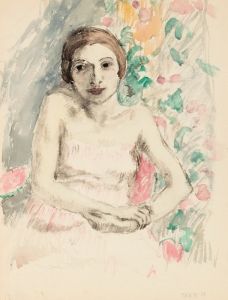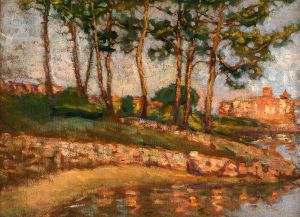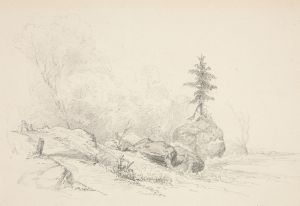
Artists Sketching in the White Mountains
A hand-painted replica of Winslow Homer’s masterpiece Artists Sketching in the White Mountains, meticulously crafted by professional artists to capture the true essence of the original. Each piece is created with museum-quality canvas and rare mineral pigments, carefully painted by experienced artists with delicate brushstrokes and rich, layered colors to perfectly recreate the texture of the original artwork. Unlike machine-printed reproductions, this hand-painted version brings the painting to life, infused with the artist’s emotions and skill in every stroke. Whether for personal collection or home decoration, it instantly elevates the artistic atmosphere of any space.
"Artists Sketching in the White Mountains" is a painting by the renowned American artist Winslow Homer, created in 1868. This work is an oil on panel painting that exemplifies Homer's early style and his interest in the American landscape and the activities of people within it. The painting is part of the collection at the Portland Museum of Art in Portland, Maine.
Winslow Homer, born in 1836, is considered one of the foremost painters in 19th-century America, known for his marine subjects and depictions of American life. Before becoming a painter, Homer worked as a commercial illustrator, which influenced his keen eye for detail and composition. His transition to painting allowed him to explore themes of nature and human interaction with the environment, which are evident in "Artists Sketching in the White Mountains."
The White Mountains, located in New Hampshire, were a popular destination for artists in the 19th century, particularly those associated with the Hudson River School and the American landscape movement. These artists were drawn to the region's dramatic scenery and the opportunity to capture the sublime beauty of the American wilderness. Homer's painting reflects this artistic tradition, showcasing a group of artists engaged in sketching the picturesque landscape.
In "Artists Sketching in the White Mountains," Homer depicts a serene scene where several artists are scattered across a rocky terrain, each absorbed in their work. The composition is balanced, with the artists positioned in a way that leads the viewer's eye through the painting, from the foreground to the distant mountains. The use of light and shadow adds depth to the scene, highlighting the textures of the rocks and the foliage.
Homer's choice of subject matter in this painting reflects the broader cultural interest in the American landscape during this period. The mid-19th century was a time when the United States was expanding westward, and there was a growing appreciation for the natural beauty of the country's diverse environments. Artists like Homer played a crucial role in shaping the national identity by capturing these landscapes and the people who inhabited them.
The painting also offers insight into the practice of plein air painting, where artists work outdoors to capture the natural light and atmosphere of a scene. This approach was gaining popularity in the 19th century, influenced by European artists and the advent of portable painting materials. Homer's depiction of artists working en plein air underscores the importance of direct observation and the artist's connection to the landscape.
"Artists Sketching in the White Mountains" is a testament to Winslow Homer's skill as a painter and his ability to convey the quiet beauty of the American wilderness. The painting not only captures a moment in time but also reflects the broader artistic and cultural movements of the era. Through his work, Homer contributed to the appreciation of the American landscape and the role of artists in documenting and interpreting the natural world.






